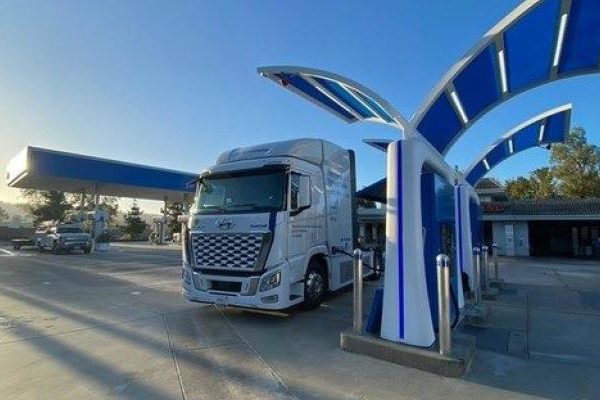
Warehouse leaders continually explore how to make their facilities maximally innovative, knowing that often leads to improved competitiveness. One option is to use hydrogen fuel cells to partially power operations. Here are some of the possibilities in this fascinating area.
Investing in Fuel Cell-Powered Robots and Drones
Robots and drones are increasingly important parts of warehouse operations. Robots can supplement human effort, helping people get more done in less time and without feeling fatigued. Drones are also helpful for handling inventory counts more efficiently, and some even operate outside of business hours.
Fuel cell-powered robots and drones are not yet the norm. However, some people think they could become commonplace someday. Tests have already shown promising results. Consider one that found drones powered this way could be approximately half as expensive and offer comparably higher output.
Storing hydrogen at a warehouse and refueling the robots and drones as needed are two of the most pressing current challenges. Planning to overcome these issues will put people in a better position to handle them once fuel cells become more widely chosen power sources for warehouse applications.
Using Fuel Cells to Overcome a Specific Challenge
Warehouse team members will likely get the best results with hydrogen fuel cells if decision-makers choose a particular problem to solve. Such was the case with a cold-storage facility dealing with decreased productivity when the chilly temperatures shortened forklift batteries’ life spans.
There was less operational time, and using facility space to store extra batteries was necessary. However, when the company switched to fuel cells in its warehouse, it didn’t take long for people to start seeing results.
For example, the company has up to 5,000 more square feet of dry or refrigerated storage space. Plus, it now only takes two minutes to precheck and fuel a truck, while the previous process was much more time-consuming. Employees got used to the changes brought about by transitioning to the fuel cells and found they also provided longer operating time frames, which supported the workflow.
As this example illustrates, maximizing space utilization and assessing equipment needs can raise productivity and make a business well-equipped for the future.
Making the Switch to Hydrogen
Transitioning to hydrogen fuel cells is a gradual process. That’s usually because they want to see the results of their investments before scaling up a project. Such was the case with decision-makers at discount supermarket chain Lidl and a specific warehouse in Western France.
As of April 2022, about 80% of the facility’s forklift vehicle fleet already operated on hydrogen, and that number reached 100% by the end of the year. Refueling a hydrogen-powered forklift reportedly only takes two to three minutes, although the task requires several hours with a battery-powered one. Lidl representatives are also pondering expanding the fuel cells to other facilities in the brand’s network or using them to power some delivery vehicles.
A successful trial of Class 8 heavy-duty trucks powered by hydrogen has already occurred in Southern California. The test runs often involved going between a warehouse and ports in Long Beach and Los Angeles. One of the trucks had about 3,600 miles put on it during this experiment.
Compelling Reasons to Use Fuel Cells in Warehouses
Forward-thinking professionals can apply fuel cells to their daily warehouse operations in these ways. Even though doing so is not yet common, succeeding with such efforts will encourage others to explore the options and stay open to using this energy source.


Jane Marsh, Contributor
The views and opinions expressed herein are those of the authors and do not necessarily reflect the official policy or position of Fuel Cells Works, its directors, partners, staff, contributors, or suppliers. Any content provided by our contributors or authors are of their own opinion and are not intended to malign any religion, ethnic group, club, organization, company, individual or anyone or anything.
Read the most up to date Fuel Cell and Hydrogen Industry news at FuelCellsWorks




